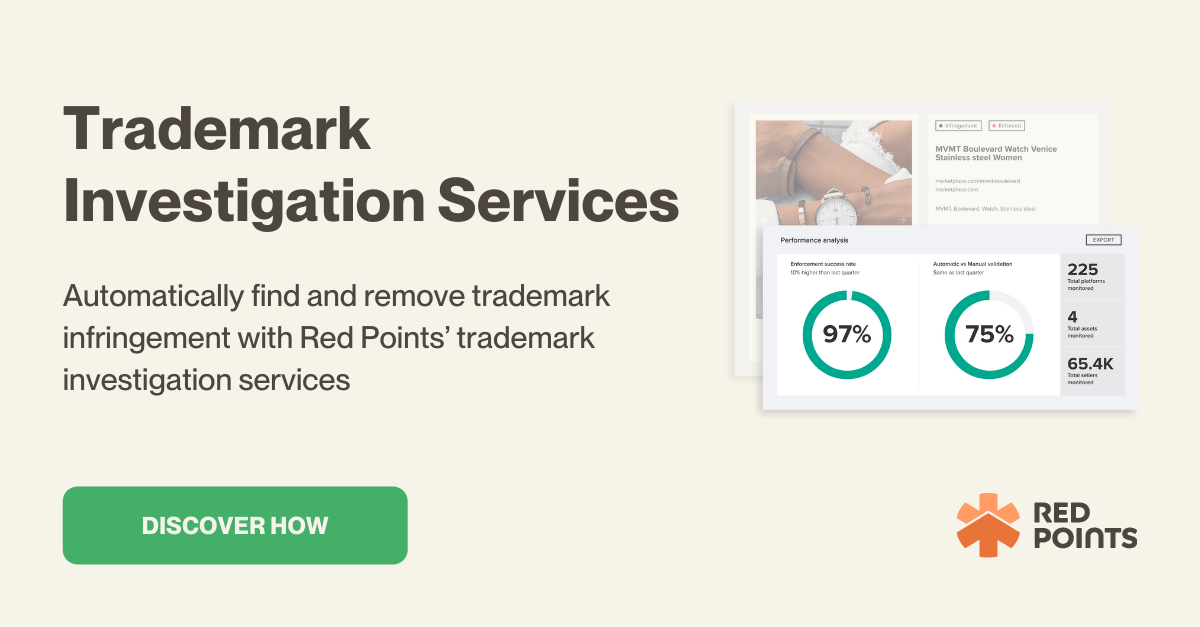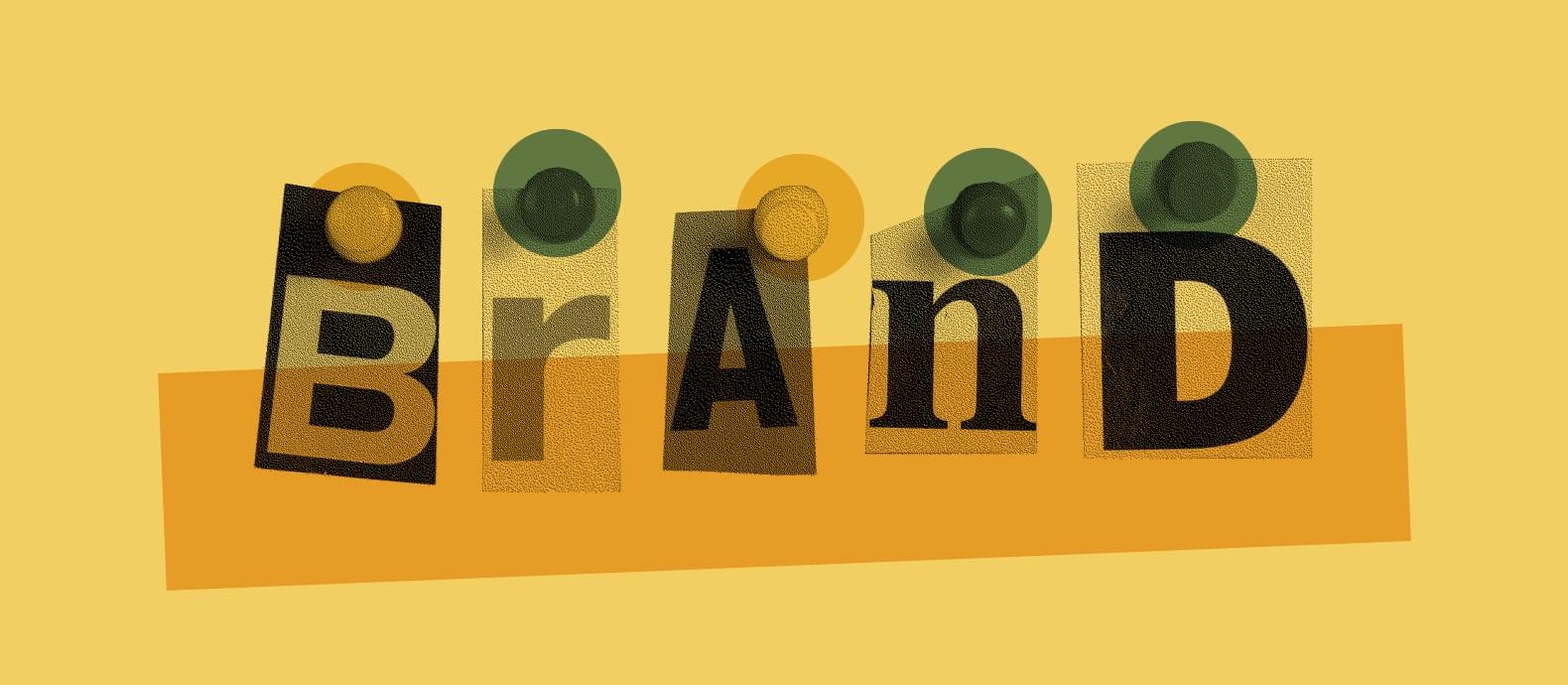Protecting your brand from counterfeits should be seen as a vital business task. The long-term impact of counterfeit on brands is massive. Loss of sales, reputation damages, loss of trust between business partners, and resources taken up by fighting fakes are the major consequences for brands.
This article will review the key steps to protect your brand from counterfeits. We explain why it is important to register your brands’ intellectual property and show you the options to legally safeguard your brand online.
What Is Brand Piracy?
When a product has a name or logo similar to that of another well-known brand or product, this is known as brand piracy. Consumers frequently confuse a counterfeit product for the original brand name, which is prevalent among easily copied products.
Brand piracy occurs when businesses steal market share from more well-known competitors. Brand piracy is prohibited by law since it violates trademark laws.
Brand piracy is classified into three broad categories: outright piracy, reverse engineering, and counterfeiting.
Outright piracy: In this case, a product is identical to the brand name and uses the same trademark. The trademark, unlike the original, is a forgery.
Reverse engineering: The product’s construction and composition are duplicated, manufactured, and then sold on the market, frequently at very low prices, in this sort of product piracy. This is very common in the electronics business.
Counterfeiting: Even if the identical trademark is on the label, the quality of the product is degraded in this instance and it is known as trademark piracy in this case. Brand infringement of this kind is quite widespread.
Impact of brand piracy on brands
It is possible for dishonest competitors who use a company’s brand to sell their goods and services to harm the profitability and long-term viability of the business seriously.
Counterfeiters might benefit from the goodwill associated with a company’s brand if products and services are marketed under similar or identical names or if they are advertised using similar advertising themes or slogans.
It’s common for counterfeit goods to be of poor quality, which can hurt the reputation of the legitimate marketer. This is why brand protection is important.
Loss of Sales
Simply put, if you sell a product and a competitor offers a cheaper version of your own product, you lose some sales.
Previously, customers could spot counterfeits and know what they were purchasing. But, online, the distinctions between real and fraudulent are blurred.
In addition to copying a company’s designs and trademarks, counterfeiters can also blend their knock-off goods with internet product reviews. The product images are occasionally the company owner’s real photos, leaving the customer to determine what is real and what is phony.
If left unchecked, counterfeits can wreak havoc on a company’s cash flow. The fashion business alone loses more than $50 billion annually to counterfeiters, a problem that spans several industries.
A tarnished reputation
Counterfeiting also harms firms’ reputations. Because many customers are ignorant that the product they are holding is a copy, they will blame the original manufacturer when it malfunctions, breaks or does not match their expectations.
Word of mouth is one of the most potent marketing tools. When these clients receive pirated goods of a product, word can spread that the real thing is substandard.
Customers will post bad reviews online, reinforcing the new reputation issue and the perception that the authentic brand produces inferior items. With Amazon’s combined listings method, a buyer can purchase products from pirated brands from the official listing, then return to the same page to leave bad reviews. These online reviews are utilized as public indications of brand quality; thus they matter.
Authentic businesses are forced to deal with the consequences of counterfeiters
So, buyers hunt for a product, buy a counterfeit, and are displeased. A refund or a new product is demanded, and they go directly to the genuine company.
Many affected businesses deal with angry consumer complaints about the product’s quality, and the customer care person is unaware that the product is a counterfeit.
Returns are also a major burden for businesses and brand owners. They get faulty copies of their products that aren’t their own and aren’t warrantied.
Long-term business trust is jeopardised
Counterfeiters harm more than just consumer relations. Counterfeiters’ acts can cause distributors, retailers, and other business partners to lose trust in authentic enterprises.
They think the corporation is ripping them off if they have a price agreement with distributors or retailers and see listings on online platforms offering cheaper products. In the case of price undercutting, why would a distributor buy wholesale?
A distributor with exclusive rights to sell in a location will feel misled if it appears that the brand itself is in direct competition with them. These impacts can substantially undermine long-term relationships established on trust and cooperation.
Fighting counterfeiters costs time and money
The first reaction of a corporation targeted by counterfeiters is to strike back. But this takes time and money.
Resources are diverted from product development, advertising, and other business areas to fund lawyers and lawsuits to defend intellectual property and copyrights.
Legitimate businesses are compelled to spend hundreds of thousands of dollars a year fighting counterfeits marketed on Amazon, eBay, and Alibaba. CEOs, innovators, and founders must respond to these infringements rather than leading their companies into the future.
How can you prevent brand piracy?
Before diving into how to defend your brand, let’s define counterfeit: Counterfeiters duplicate a product’s design and name without permission from the intellectual property owner in order to pass themselves off as the real thing. Counterfeiters violate copyrights, trademarks, and patents.
The first step in safeguarding your brand from counterfeiters is to register it. Then, if you come across counterfeit goods, you may demonstrate and claim ownership of the associated intellectual property. As a brand owner, consider registering these IPs:
Copyright
A copyright is a legal safeguard that guards the author’s original work. It is the sole right of the person who owns the copyright to sell, publish, and/or reproduce the work covered by the copyright. Literary, musical, visual, and other forms of creative expression are all examples of this type of work.
Patent
Inventions can’t be made, sold, or utilized by anybody else unless they have permission from the patent owner. As long as both parties agree, the patent holder can sell or license the invention to another entity formed as part of the joint agreement.
Trademark
Trademarks are symbols, words, phrases, sounds, smells, or color schemes that help customers recognize and differentiate one company’s goods and services.
You may begin to protect your brand globally by registering your intellectual property in your own country. Copyrights, patents, and trademarks are not universally recognized, so they must be registered in each country where they are used. The cost and method of registering can vary widely from one country to the next.
Going through a legal battle
Filing a lawsuit to stop the sale of counterfeit goods should be carefully studied and only used if businesses can accurately assess the risks and benefits of litigation.
You must show that bogus listings deceived customers and damaged your brand in court. To stop further violations, courts can issue an order. Infringers are sometimes obliged to pay damages, give up profits, and pay legal fees.
Filing a lawsuit is not the best method to eliminate bogus listings, defend your brand reputation, and prevent sales losses from fake products. Litigation is time-consuming, costly, and has no assurance of success.
Enforce the prohibition of counterfeit listings
If you find counterfeits of your goods online, the first thing you should do is remove them. Enforcement depends on whatever platform is being used to commit the infringement.
E-commerce websites and social media networks are usually aware of the issue and assist in enforcement. Knowing how to continue on which platform, on the other hand, aids in quick and efficient action.
Search the web for possible copyright infringements
The problem isn’t solved just because you’ve taken down a fake. Fake listings on different marketplaces and countries throughout the world make it difficult for online firms to keep up with counterfeiters.
That’s when you should consider submitting a takedown at a large scale with the help of technology.
Brand protection companies like Red Points keep tabs on your IP’s whereabouts all around the world. Thanks to these cutting-edge technological solutions, keeping your brand safe has never been easier.
What’s Next
Counterfeit goods have severe and long-lasting effects on a business. Brands will lose sales if the situation spreads because counterfeiters can undercut prices.
As buyers associate their brand with buying a knockoff, their reputation is also at risk. According to Red Points’ research, most consumers devalue a brand if they know it is widely counterfeited.
Unaware of the nature of the goods, many customers will return to the legitimate brand for a remedy. The brand is left to clean up a counterfeiter’s mess without recompense.
Counterfeiters can harm a brand’s reputation among distributors and other partners. Criminals can effectively nullify exclusive agreements, leaving genuine businesses on both sides disappointed.
See how you can protect your brand online with Red Points.







